Sufi Ghulam Mustafa Tabassum – صوفی غلام مصطفیٰ تبسّم
|
میرے شوق دا نہیں اعتبار تینوں، آ جا ویکھ میرا انتظار آ جا از من گَرَت نہ بُوَد باور انتظار بیا You cannot think my life is spent in waiting? Well then, come (A couplet from Ghalib’s ghazal in Persian, translated into Punjabi by Sufi Tabassam, it became famous by Ghulam Ali’s performance in 1970’s) SUFI GHULAM MUSTAFA TABASSUM, Sufi Sahib to his students and just Sufi to his close friends, was born to a Kashmiri family in Amritsar on 4th of August 1899. By profession he was teacher first and foremost but he also excelled as a critic, editor, poet, broadcaster, playwright and translator. Sufi Ghulam Mustafa’s pen name was “Tabassum,” bestowed upon him by his friend Hakim Muhammad Hussain Arshi, because according to him, “there was always a faint smile on Sufi’s lips”. After finishing his high school from Amritsar he finished first two years of college from Khalisa College in Amritsar. As was customary Sufi Tabassum learned both Urdu and Persian during his school years and acquired excellent command in both languages.
He moved to Lahore in 1920 where he finished BA honours from Forman Christian College. It was at the FC College Lahore where he formed his lifelong friendship with Dr. M.D. Taseer. Later when Progressive Writers Movement was started by Syed Sajjad Zaheer and others around 1936 both Sufi Sahib and Taseer became its active members. Indeed Taseer was its founding member in England along with Mulk Raj Anand and Prof Ahmed Ali. On his friend MD Taseer’s death in 1950, Sufi Sahib wrote: میروی ای انجمن آرای ما In 1924 Sufi Sahib did MA in Persian from Islamia College Lahore, before deciding to go for training as an educator from Central Training College Lahore. These years as student in Lahore gave him inspiration as well ideas for becoming a writer and intellectual later in his life. But it was perhaps his teaching education where Sufi Tabassum found his calling as an educator. He started working as a teacher first in Amritsar and then moved to the Central Training College Lahore. He finally joined Govt. College Lahore in 1931 as a lecturer of Persian and later in Urdu department as well. He retired as the head of the Persian department from the college in 1954. Patras was there as the college’s principal. After rather dull and dry atmosphere of the Training College Sufi Sahib found the whole atmosphere electrified by an uplifting cultural and literary air. Faiz Ahmed Faiz and N. M. Rashid were then students there. These were the most active and productive years for Sufi Tabassum. Sufi Tabassum was one of founding members of Niazmandan-i-Lahore. An informal literary/culture circle in Lahore its members included such luminaries as Pitras Bukhari, Abdul Majeed Salik, Imtiaz Ali Taj, M.D. Taseer, Chiragh Hasan Hasrat, Pandit Hari Chand Akhter, Hafeez Jallundhari, Abdur Rahman Chughtai and Majeed Malik. Here is an excerpt by Sufi Tabassum himself about the kind of literary activities Niazmandan-i-Lahore would organize: “بزم سخن” کی وساطت سے ایک بڑے مشاعرے کی صدارت پروفیسر پطرس بخاری کے سپردہوئی۔ شام ہوتے ہی کالج کا ہال طلبہ سے بھر گیا۔ سٹیج کے ایک طرف نیازمندانِ لاہور اپنی پوری شان سے براجمان تھے۔ Created in 1930’s, Niazmandan-i-Lahore was a creative, competitive, and literary group of like-minded people under M.D. Taseer and Patras Bukhari. On one hand it was opposed to any monopolistic claims on Urdu by the so called Ahl-e-Zuban of UP-Wallas (Delhi, Lucknow, and Hyderabad Dakkan). But more than that it was used to keep Lahore’s literary atmosphere alive and to encourage and cultivate new generation of Urdu writers. In his biographical book on the sketches of writers and intellectuals of Lahore (Biad e Suhbat e Nazuk Khialan ﺑﯾﺎدِ ﺻﺣﺑتِ ﻧﺎزک ﺧﯾﺎﻻں) Dr. Aftab Ahmed has dedicated a whole chapter to Niazmandan-i-Lahore. It deservers a whole book to itself for that was the context in which writers like Faiz, Rashid, Ghulam Abbas, Askari, Jalundhari came to fore. When it came to Urdu and Persian diction and vocabulary, most of the Urdu and Persian writers of those days would feel comfortable only after Sufi Sahib had reviewed their work. That included senior and experienced journalists like Charagh Hassan Hasrat. He is considered a pioneer in Urdu children’s poetry. One of his first poems was “Cheechon Chacha”, a translation of “Hickory Dickory Dock”, which he wrote for his daughter. He has written many books of children’s poetry. The most famous of his poems are “Totbatot” and “Jhoolnay”. Though looked down upon by some fellow writers, A. S. Bukhari admired and strongly supported this work and wrote foreword to Sufi Sahib’s poems (Jhoolney) for children. The patriotic devotional songs written by him during the 1965 Indo-Pak War, which were sung by Madam Noor Jehan are still popular. His love for the Persian language led him to help establish the first Iranian cultural center at Lahore, of which he became the director, after retiring from Government College in 1954. He visited Iran several times and was awarded a Tamgha-e-Nishan-e-Sipaas by the government of Iran in 1966. Sufi Sahib is credited with his work on Iqbalyat that started while Iqbal was alive as well his translations of Ghalib. Although he taught Urdu in college and used it for his writings, he found working with Punjabi and Persian as important. In that he is rather unique to have translated both Iqbal and Ghalib’s Persian works in Punjabi. Like most of Amritsaris, he was was very well blended in the rich culture of Lahore. But that did not stop him, or his fellow Amritsaris, from indulging in the sorrowful nostalgia of that Jerusalem Lost Amritsar invoked among its exiled residents. Sufi Tabassum died in 1978 in Lahore and is buried in Miani Sahib graveyard. He had had a long and productive life that found its place in the leading such institutions as Govt. College Lahore, Niazmandan-i-Lahore, Iqbaliyat, Ghalib, literature for children, and promotion of Persian in the latter day Pakistan. That did not stop him from soulfully remembering his beloved Amritsar and its Company Bagh probably until the day he died. |
|
میرے شوق دا نہیں اعتبار تینوں، آ جا ویکھ میرا انتظار آ جا بھانویں ہجر تے بھانویں وصال ہووے ،وکھو وکھ دوہاں دیاں لذتاں نیں ایہہ رواج اے مسجداں مندراں دا ،اوتھے ہستیاں تے خود پرستیاں نیں تُوں سادہ تے تیرا دل سادہ، تینوں اینویں رقیب کُراہ پایا سُکھیں وسنا جے تُوں چاہو نا ایں میرے غالبا ایس جہان اندر |
ز من گَرَت نہ بُوَد باور انتظار بیا وداع و وصل جداگانہ لذّتے دارَد رواجِ صومعہ ہستیست، زینہار مَرَو تو طفل سادہ دل و ہمنشیں بد آموزست حصار عافیَتے گر ہوس کُنی غالب |
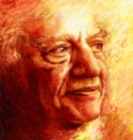 فیض سے میری پہلی ملاقات – صوفی غلام مصطفیٰ تبسم
فیض سے میری پہلی ملاقات – صوفی غلام مصطفیٰ تبسم
سن 1929ء تھا اور اکتوبر کا مہینہ۔ مجھے سینٹرل ٹریننگ کالج سے گورنمنٹ کالج میں آئے ہوئے کوئی تین ہفتے گزرے تھے۔ سابقہ درس گاہ کی خشک تدریسی فضا اور ضبط و نظم سے طبیعت گھٹی گھٹی سی تھی۔ نئے کالج میں آتے ہی طبیعت میں انبساط کی لہر دوڑ گئی۔ ادب و شعر کا شوق پھر سے ابھرا۔ چنانچہ “بزم سخن” کی وساطت سے ایک بڑے مشاعرے کی صدارت پروفیسر پطرس بخاری کے سپردہوئی۔ شام ہوتے ہی کالج کا ہال طلبہ سے بھر گیا۔ سٹیج کے ایک طرف نیازمندانِ لاہور اپنی پوری شان سے براجمان تھے۔
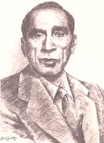 پطرس بخاری مرحوم
پطرس بخاری مرحوم
صوفی غلام مصطفیٰ تبسّم
پطرس صاحب کی زندگی دل کی دلچسپیوں کا دائرہ بہت وسیع تھا۔ اگر یہ کہا جائےہ کہ ان کی بعض وابستگیوں کے ڈانڈے ایک بین الاقوامی افق سے ٹکراتے تھے، تو مبالغہ نہ ہوگا۔ بقول ان کے ان کے دل میں تنہا ایک ملک یا قطعہ ارضی کی یاد نہیں بلکہ بیک وقت چھ ملکوں کی یادیں سمائی ہوئی تھیں۔ وہ ان سب کو سینے سے لگائے رکھتے اور کسی ایک وقت بھی دل سے الگ نہ ہونے دیتے۔ یہ ان کے وسیع القلب ہونے کی دلیل تھی۔
Jhoolney
Introduction by Patras Bukhari (Deebacha)
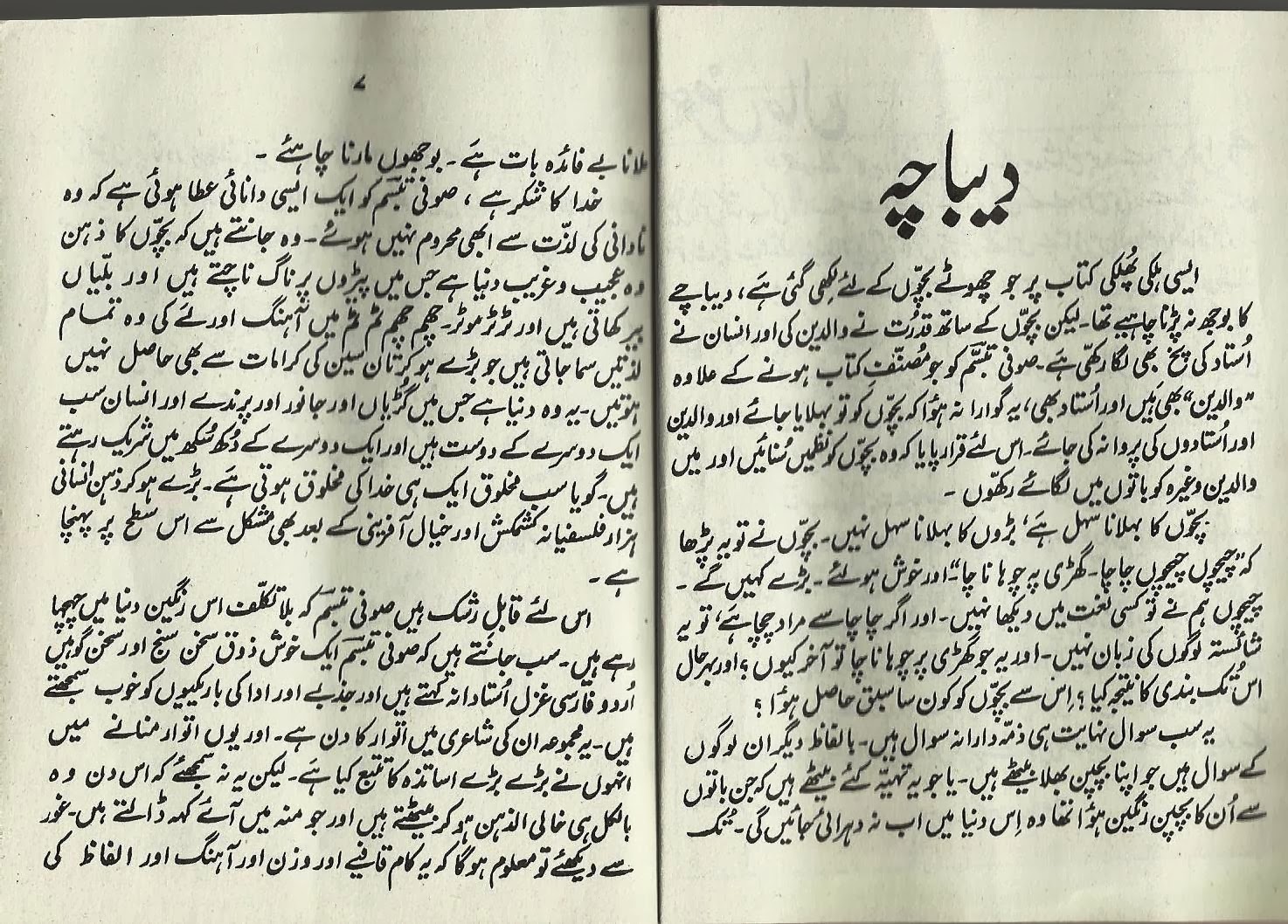
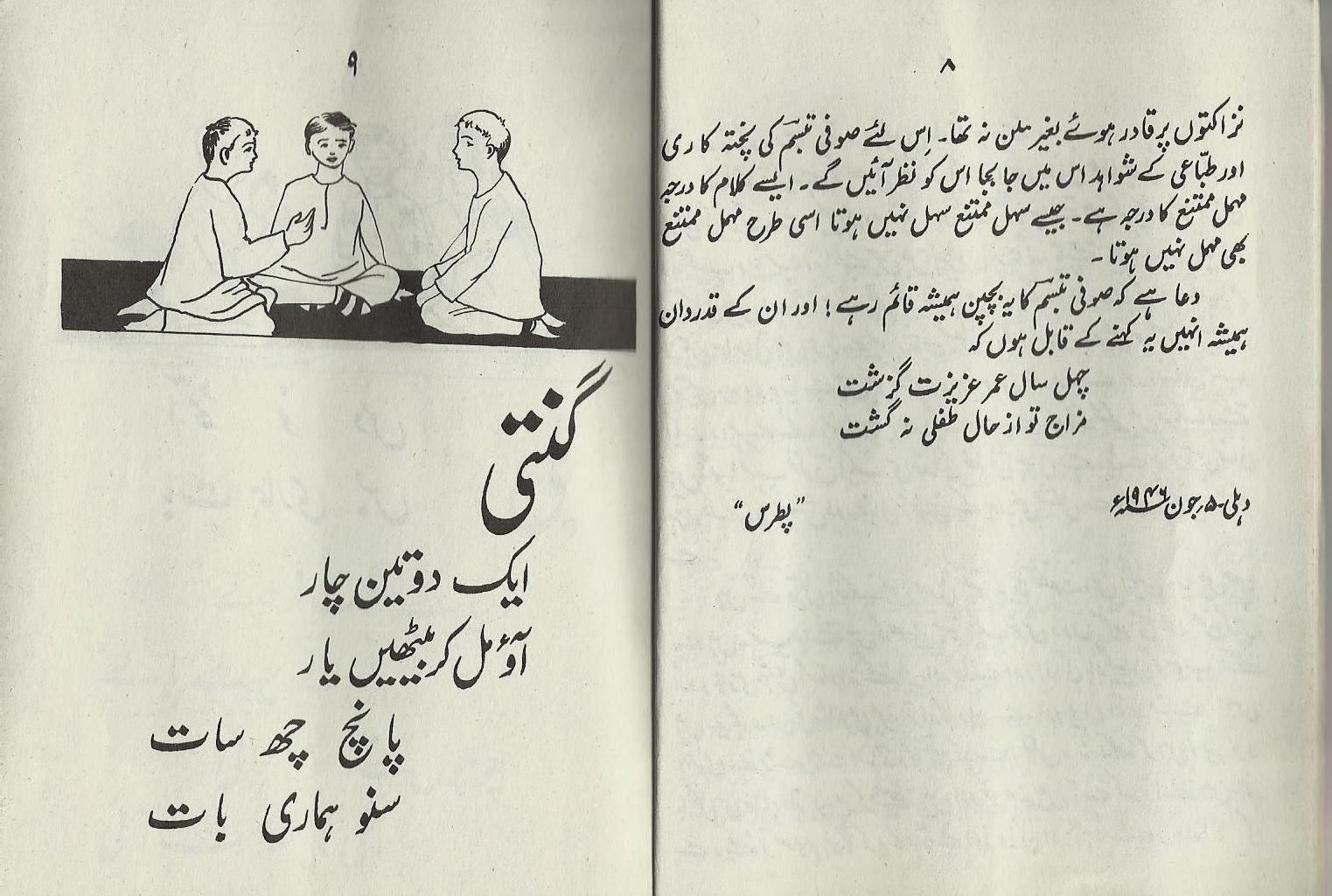

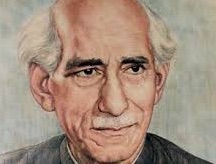 Birth—1899
Birth—1899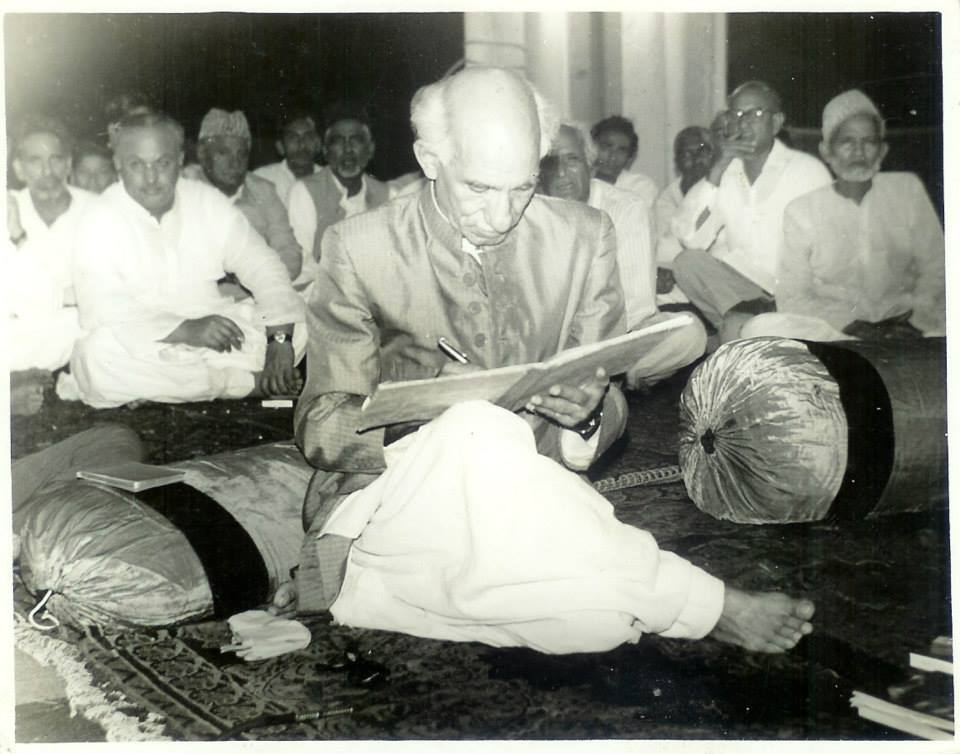 He started writing poetry in Persian at the age of 13 or 14. He did not take poetry seriously at that time, but he participated in poetry competitions in school and college. He began writing poetry and prose more seriously when he became a regular writer for a magazine called Nairang-e-khiyaal in 1924.
He started writing poetry in Persian at the age of 13 or 14. He did not take poetry seriously at that time, but he participated in poetry competitions in school and college. He began writing poetry and prose more seriously when he became a regular writer for a magazine called Nairang-e-khiyaal in 1924.